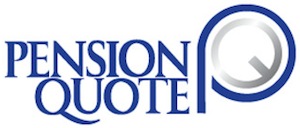With the increased popularity of the Roth IRA Conversion over the last several years, many financial advisors are posing this question to their clients– “should you or shouldn’t you” convert your current Traditional IRA to a Roth IRA? What are the pros and cons, and more importantly, what are the tax implications of that conversion?
For most Americans who have relatively small IRAs, converting to a Roth IRA generally comes down to the tax owed now versus the tax bill upon distribution in the future… but on a much smaller level. For high-income business owners, especially those in their late 40s or older, the potential tax bill can be significantly larger.
High income business owners who have participated and max funded their IRAs and 401k for 20+ years may have a substantial amount of money currently parked in their IRAs… especially if they have “rolled over” a large amount from 401k/Profit Sharing Plans from prior employers and have continued to fund a sponsored plan when they started their own business.
The main benefit attached to converting to a Roth is the ability to pay your tax on the money today and enjoy the balance of the years ahead to continue to fund and enjoy tax-free earnings and also a tax free distribution when money is taken out of the plan in the future.
A high income business owner who has accumulated $500k– $1mill over their lifetime in a “Rollover IRA” would have a tremendously large tax bill due should they wish to convert their rollover plan to a Roth IRA. Thus, the “tax quandary” begins, “should I or shouldn’t I”?
What if the high-income business owner could have his/her cake and eat it too? What if the crippling upfront tax of converting your huge IRA Rollover to a Roth IRA could be mitigated, even wiped out? Then the business owner would in essence view the conversion as an absolute winner!
Take the case of a 52-year old business owner who is planning to work another 10 years, and has that mega rollover and is pondering converting to a Roth IRA. The owner’s money manager and tax advisor indicate that he’ll have to pay a $400-500k tax bill in order to do that.
The owner has a big tax decision to make but making matters worse, he still has a minimum annual gross income of $500,000 in his current business and therefore faces another large year-end tax bill. So, instead of one tax problem, he now has two!
Enter the Split Funded Defined Benefit plan as the great tax equalizer and the perfect complement over time to make the Roth IRA conversion the winning formula. A brief analysis of the situation reveals that our middle-aged business owner can immediately start contributing $200,000 yearly to the DB Plan and thus realize an immediate $90,000-$100,000 annual tax savings.
In the next 5 years that owner can consistently contribute a cumulative tax- deductible contribution of $1 million in the DB Plan and by the 5th year the Roth IRA conversion is a “wash.” The owner’s Roth conversion tax concern up front is now a distant memory; all of the current Roth IRA assets are now growing tax-free, and will also be tax free upon distribution to the owner and ultimately to his family.
Should the owner decide to work another 5 years and continue to fund the DB Plan at the current $200k level that equates to ANOTHER $1,000,000 of tax deductible contributions over time, plus an additional $400,000- $500,000 of additional tax savings yielded favorably to the owner’s side of the tax ledger.
So in summary, the combination approach of marrying a Split Funded Defined Benefit Plan to a large Rollover Roth IRA Conversion is an absolute win-win for the high-income business owner in the long run… and truly a match made in Tax Heaven!
Will this strategy work for your clients? Connect with one of our Pension Pros at PensionQuote. [email protected].

